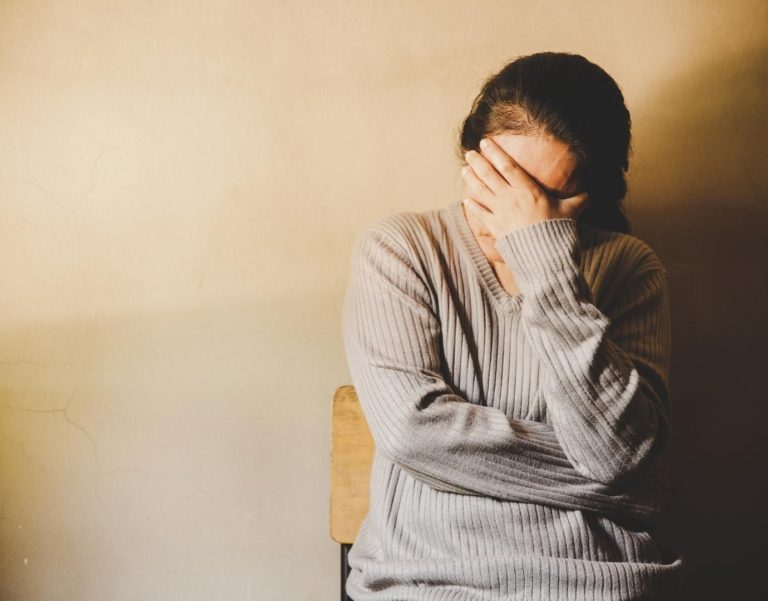Table of Contents
Ambivalent attachment, also known as anxious-resistant attachment, is an attachment style that can make it difficult to form and maintain healthy relationships. Individuals with ambivalent attachment tend to have a deep fear of abandonment – leading to an intense need for constant reassurance and external validation.
Here’s a few points of what this looks like:
-
Individuals with ambivalent attachment style may exhibit clingy behavior and have difficulty trusting others, which can create a cycle of “clinging and then challenging.”
-
They may have experienced inconsistent caregiving in early childhood, leading to a lack of security and stability in their relationships.
-
They may feel intense anxiety and are easily triggered by perceived rejection or neglect.
-
They may feel jealous or insecure in their romantic relationships
-
They may struggle with setting boundaries, and have a strong need for closeness and intimacy.

How to Know If You Have Ambivalent Attachment
1. Conflicting Emotions: People with ambivalent attachment often experience conflicting emotions within their relationships. They may cling to their partner, then challenge them when they receive love or validation, They often seek reassurance and validation from their partner, yet push them away due to fear of rejection or abandonment.
2. Dependency and Insecurity: Feeling anxious and insecure when their partner isn’t readily available (constantly questioning their commitment or love). Depending on others to regulate their emotions can result in the fear of being alone – and difficulty with self-soothing.
3. Fear of Abandonment: Individuals with an ambivalent attachment style often have a deep-rooted fear of abandonment. This fear may stem from early childhood experiences where their needs were inconsistently met or when significant caregivers were emotionally unpredictable or unavailable. As adults, they may have difficulty trusting others and may exhibit clingy behavior to prevent abandonment.
4. Difficulty Setting Boundaries: Ambivalent attachment can lead to challenges in setting healthy boundaries within relationships. Individuals may struggle to express their needs and desires clearly, fearing rejection or disapproval. They often find themselves dismissing their own needs.
5. Overanalyzing and Obsessiveness: Overanalyzing their relationships. Scrutinizing every interaction and seeking hidden meanings in their interactions with their partner. They may obsessively ruminate on potential signs of rejection or betrayal, which creates a constant state of anxiety. This can strain relationships and make it challenging to experience true intimacy.
If you resonate with these signs, you may have an ambivalent attachment style (only a mental health professional can truly identify this pattern). However, recognizing these patterns is the first step towards personal growth and developing more secure attachments. Seeking professional help from a therapist experienced in attachment therapy can provide the support and trusting environment that you need.

How to Fix Ambivalent Attachment in Adults
1. Gain self-awareness: Start by becoming aware of these patterns, and how it impacts your relationships. Pay attention to your emotional responses, patterns of behavior, and thoughts when it comes to attachment and closeness. Understanding the roots of your ambivalent attachment style can help you begin the healing process.
2. Challenge your core beliefs: Ambivalent attachment often stems from underlying beliefs such as “I am not good enough,” or “People will always leave me.” Gently challenge these core beliefs by questioning their validity and replacing them with more empowering and realistic perspectives.
3. Develop self-compassion: Treat yourself with kindness, understanding, and patience as you work toward securing your attachment. There is a reason for developing this attachment style.
4. Seek therapy: Therapy can provide a safe space to explore your attachment history, gain insight into your emotional patterns, and develop new strategies for secure attachment. A therapist can also help you process any past traumas that contribute to your ambivalent attachment style.
5. Engage in self-reflection: Take the time to reflect on your relationship patterns. Notice the moments when you become anxious, clingy, or scared that your partner will leave you. Understand your emotional triggers without judgment, and explore ways to respond differently.
6. Establish healthy boundaries: Insecure attachment styles often involve difficulties with boundaries. Practice setting and maintaining healthy emotional and physical boundaries in your relationships.
7. Build a support network: Develop a reliable support network of friends, family, or support groups to lean on during times of stress and anxiety.
8. Practice self-soothing techniques: Learn and practice self-soothing techniques. If you struggle with self-soothing, working with an attachment therapist can definitely help.

1. Creating a Secure Therapeutic Relationship: The therapeutic relationship itself can serve as a trusting experience for clients with ambivalent attachment style. By receiving non-judgmental support, the therapist models a secure base, fostering a sense of safety and trust. This secure foundation allows clients to explore their attachment patterns more deeply.
2. Identifying and Exploring Early Attachment Experiences: Through discussions and reflection, therapy can help you gain insight into your early attachment experiences – and how they contribute to your ambivalent attachment style in present day. By understanding the root causes and recognizing the impact of past relationships, clients can begin to separate present circumstances from past experiences, and reducing the intensity of their emotional reactions.
3. Developing Effective Coping Strategies: Therapy can help individuals with ambivalent attachment style develop healthier coping mechanisms to manage their anxieties and fears. Techniques such as mindfulness, self-soothing exercises, and emotion regulation skills can be taught and practiced.
4. Addressing Negative Core Beliefs: Ambivalent attachment style often stems from negative core beliefs about oneself, others, and relationships. Therapy can help you identify and challenge these negative beliefs, and replace them with more positive and realistic ones. This process involves examining evidence, gently challenging distorted thinking, and developing a more balanced perspective on relationships.

If you’re struggling with an ambivalent attachment style and seeking to heal from past wounds with attachment therapy in Los Angeles, I’m here to help.
Together, we’ll work to uncover the root causes of your ambivalent attachment style and develop strategies to heal from past traumas. By using a collaborative yet direct approach, I will help you build healthy, secure relationships – and develop strategies to move forward with confidence.
| If you are interested in learning about fearful avoidant attachment, click here
Feel free to reach out, and together we will create a tailored therapeutic plan to help you overcome ambivalent attachment, and end the cycle of clinging and challenging. Don’t let your attachment style hold you back any longer – take the first step towards healing and contact me today for a consultation.
1) “Attached: The New Science of Adult Attachment” by Amir Levine and Rachel Heller – This book explores the different attachment styles and how they impact our relationships. It offers practical advice for how to improve your attachment style and create more secure bonds.
2) “Insecure in Love: How Anxious Attachment Can Make You Feel Jealous, Needy, and Worried and What You Can Do About It” by Leslie Becker-Phelps – This book focuses on anxiety and ambivalence in relationships stemming from an insecure attachment style. It provides insight into the behaviors and thought patterns that can damage relationships and practical strategies for building a more secure connection.




